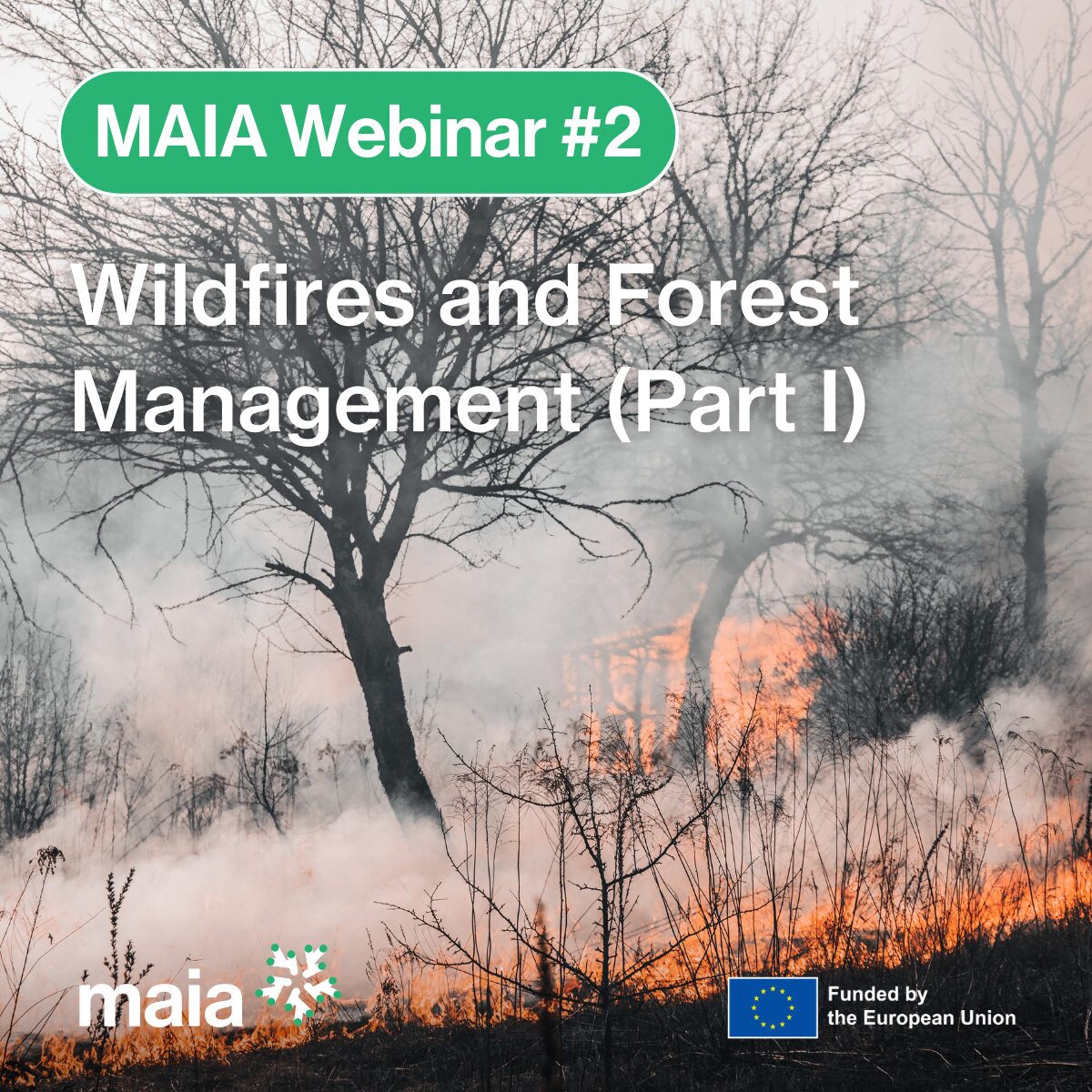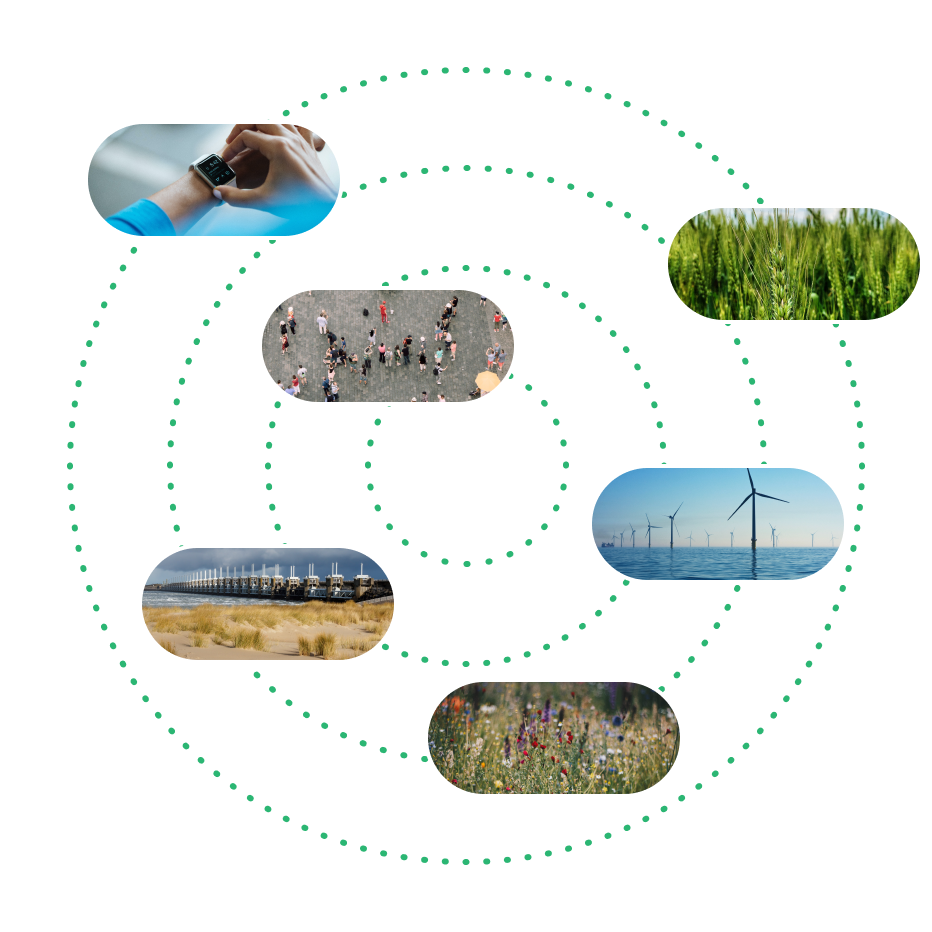About the Webinar
On Friday 7th of July we had the pleasure to hear the projects FIRE-RES, GROASIS and TREEADS in Part I of the Wildfires and Forest Management series.
Dr. Pau Brunet-Navarro, deputy coordinator of FIRE-RES (Innovative technologies & socio-ecological-economic solutions for fire resilient territories in Europe) presented the current activities of the project.
FIRE-RES aims to implement an Integrated Fire Management approach and support the transition towards more resilience landscapes and communities to Extreme Wildfires Events in Europe. The duration of the project is 4 years (Dec. 2021-Nov. 2025) with a budget of 21.5M Euros. The project has 11 Living labs in the following locations:
- Galicia – Spain
- Catalonia-Spain
- Canary Islands
- Norway-Sweden
- Bulgaria
- Nouvelle Aquitaine
- Greece
- Germany-The Netherlands
- Portugal
- Sardinia- Italy
- Chile
These living labs address the public sector, scientific communities, private companies, and citizen associations.
The project has 4 main objectives:
- Define the set of extreme wildfire event concept and use it to address the challenges ahead.
- Develop, demonstrate, and deploy 34 innovations at the technological, social, health/safety, administrative, ecological, and economic levels.
- To integrate and upscale results from the niche-level innovations implemented locally in the living labs across Europe and beyond.
- To raise awareness about extreme wildfires and transfer knowledge.

Mr. Wout Hoff, CEO of Groasis, presented the latest use cases of the award-winning Dutch company Groasis.
In the picture below Peter Hoff (founder of Groasis) is depicted together with all the Groasis technological developments. His vision was to make 2 billion hectares of degraded land productive again to:
- Eradicate hunger
- Reduce water scarcity
- Fight climate change
- Increase biodiversity
Groasis received funding from EU-Life funds in 2016. The core technology of Groasis is the Waterboxx plant cocoon.

Use cases presented in this webinar by Mr. Wout Hoff, include success stories in Saudi Arabia, Ecuador, Napa Valley California (for wines), among others. To see the full list of ongoing projects please click here.

Groasis are a technological provider; they do not plant trees. They supply plant cocoons to customers both the private sector as well as NGO and governments. Over the past 15 years, more than 50 countries and 6 continents across the world are using this Groasis technology.

Dr. Ragni F. Mikalsen, research scientist and technical manager, presented the EU project TREEADS. TREEADS is a holistic Fire Management Ecosystem for prevention, detection, and restoration of Environmental disasters. The project has 47 partners (14 European Countries and Taiwan), budget of 20M Euros, and the lifetime of 42 months (having started in Dec. 2021).
The project has the following concept of 26 technologies being currently developed:
- Prevention and preparedness (utilizing forest mapping, social media, early warning systems etc)
- Detection and response phase (coverage on multiple altitudes, from hotspot detection with satellites to on-site object recognition with AI, a training platform, and UX Design as well as AR Helmets)
- Restoration and adaptation
In the Norwegian Pilot, where Dr. Mikalsen is the technical manager and leader of the pilot, the team aims to identify the type of wildfires in the Nordics and the needs that come with it.
Due to the long and narrow territory of Norway, a large population in northern Norway relies heavily on the infrastructures in the forest, such as power grids and telecommunication towers. Therefore, it is crucial for Norway to reliably detect forest fires and protect the critical infrastructures in the early stage. To improve prevention and preparedness for wildland fire, several field exercises on forest fires are carried out each year in Norway by local firefighters, Norwegian Fire School (NBSK), and the Norwegian Directorate for Civil Protection (DSB). The Norwegian pilot use case will be connected to such exercises. Measurements obtained from the field exercises will be used as the inputs to test the passive fire protection technologies provided by partners.
The project has 8 complex pilot implementations in the following locations: Norway, Italy, Austria, Spain, Germany, Romania, Greece and Taiwan)

Lessons Learned
- FIRE-RES has developed 34 innovations in 11 living labs across Europe including Chile.
- TREEADS has developed 26 technologies to assist fire management.
- FIRE-RES is already collaborating with TREEADS and EU projects SILVARUS and Firelogue. Neither FIRE-RES nor TREEADS was aware of project Groasis, and vice versa.
- Groasis can be tested and bought by anyone. Groasis supply plant cocoons to customers both the private sector as well as NGO and governments.
- Solutions exist for reforestation, but involvement of policy makers needs to be involved. When project coordinators were asked how MAIA could further support in raising further awareness to highlight their projects, speakers mentioned that the public administration should contribute in creating the policy framework and maybe contributing with some financing initiative so that the solutions developed in the projects are further replicated and expanded. Additionally private technological companies could replicate these solutions to their problem regions. But in the end, society in general being aware of such solutions and projects is vital.
- Implementation of these European calls need to be emphasised. For example, Groasis have an eager customer in south of Spain wanting to plant 80,000 trees (whilst using the Groasis technology), but due to droughts affecting the area he is not allowed to plant trees as ordered by the government. If he were to do it using the Groasis technology he would be using a fraction of the water that he would otherwise require. Regardless, the local government still applies a complete local ban on planting trees. So, disseminating the knowledge of successful technologies to the local governments, such as Groasis which uses 90% less water, would be beneficial to the projects.
- MAIA could help with the dissemination of knowledge being developed in these projects and sharing it to local governments or policy makers to help create change.
How you can get involved

- Discover the 11 Living labs (open innovation ecosystems) across Europe where FIRE-RES demonstrates and deploys its innovations in collaboration with local and regional actors. These ecosystems can foster collaboration among the public sector, scientific communities, private companies and citizen associations. The figure below depicts the locations of the FIRE-RES Living labs. Additionally there is also a living lab in Chile (not shown here).

- Discover the products of GROASIS here

- Find out more about the Pilots in TREEADS here


Comments
There is no content